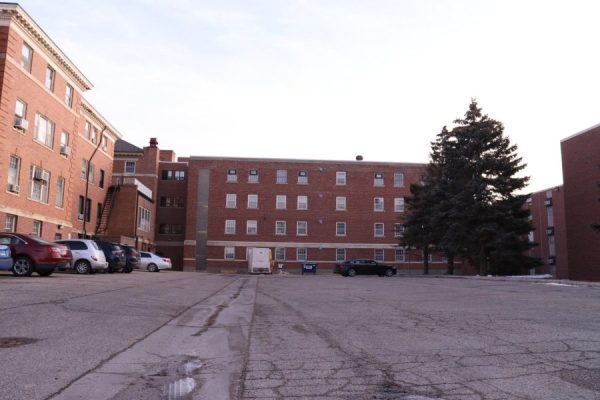From old dorms to a ‘high-tech’ facility built for the future
February 3, 2009
Ashley Wulf
By the end of the semester, the electrical engineering and computer science department at SDSU will have a new home.
Previously known as Harding Hall South, the Electrical Engineering and Computer Science Building is near completion, with May 1 set as a tentative ribbon-cutting ceremony.
Dennis Helder, head of the Electrical Engineering and Computer Science Department, said the new building is a dream come true. Since 2003, the electrical engineering and computer science programs have been combined but have never been housed in the same facility. According to the Feb. 27, 2008, issue of The Collegian, the department is currently spread thin in four buildings on campus: Harding Hall, Crothers Engineering Hall, Solberg Hall and the Administration Building.
“After we move, faculty (and students) will all be together ? so they can interact,” Helder said.
Currently, most electrical engineering faculty offices are in Harding Hall, which is troubling to all faculty of the department, Helder said.
“We’re a high-tech organization. The premiere high-tech department on campus lives in a dormitory built in the 1950s and ruled unfit for student use in the 1960s,” he said. “[The new building] means that we’re moving out of a dormitory into a building that was designed for us.”
Lewis Brown, dean of the College of Engineering, said that serious talks about a new building began in 2006, but plans quickly sped up in 2007 when donors for the building met face-to-face with President David Chicoine.
Faculty should be able to move in during Spring Break, Brown said.
The total cost of the Electrical Engineering and Computer Science Building was $7.5 million. “The funds were raised entirely from private gifts from individuals and corporate. No state money was used,” Brown said.
The new building consists of four floors. The lower floors will be used primarily for academics, with several new, large classrooms built specifically for engineering students. Two of the classrooms are dual-projector classrooms, which means professors can display content from two different sources simultaneously. The white boards have recessed lights in certain areas, which will make it possible for the professor to have a presentation on the projector and also write on the board, with both being visible to the students.
The fourth floor will be available for what Helder calls “university-industry interaction.” Companies connected to the EE&CS department will be able to lease space on the top floor to do research and development while interacting with students going into the field. Brown said the department is fortunate to be able to offer such an opportunity for both companies and students. “It’s very exciting and new for SDSU to have industrial space in an academic space.”
Both Brown and Helder said that currently, it is difficult to get potential students excited about the program because they walk into a drab and dreary Harding Hall. Both feel that when the new building is open, students will be more excited about attending SDSU and will have a better sense of how high-tech the department really is.
During a tour of the new building, Helder pointed out that in Harding Hall the temperature in each room could not be controlled, so students often performed labs in September that could be as warm as 95 degrees. In the new building, each room can be controlled. He also was quick to point out the size of the laboratories. In Harding Hall, the “labs” are three old dorm rooms with the walls knocked out, making the room long and narrow, but in the new building, the labs were built with their purpose in mind, ensuring plenty of space for the students.
Even though the building is not open yet, there are already plans for phase two of the building. It will consist of a west-end extension, and when completed, all electrical engineering faculty will be moved to the building. The tentative plan, according to Helder, is to have phase two done within the next five years, but the recession may hurt the timeline.
Helder said that while the building is exciting because it is a high-tech building for a high-tech major, he said the most exciting aspect is that it was designed with students in mind.
“Every floor has student space on it. This is a building for everyone, but it was first and foremost designed for students.”
























